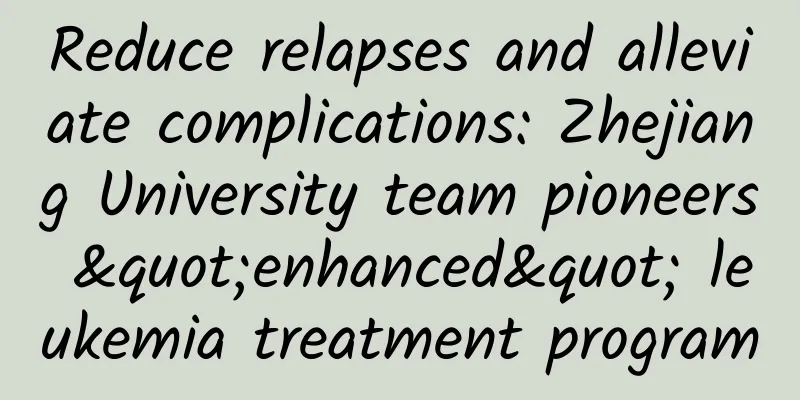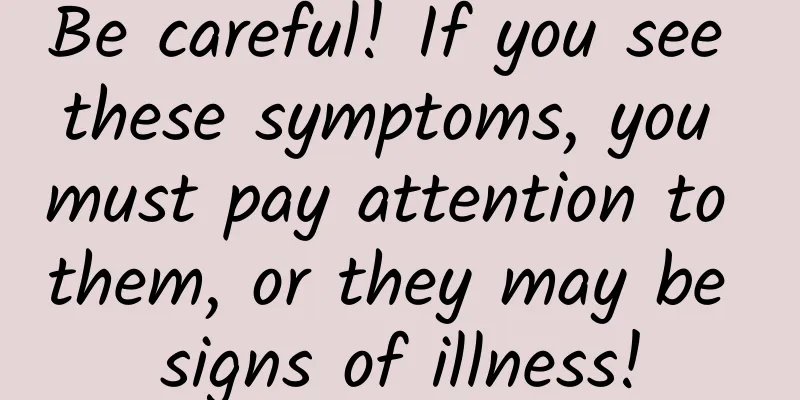Reduce relapses and alleviate complications: Zhejiang University team pioneers "enhanced" leukemia treatment program

|
Prone to relapse, infection, and low long-term survival rate are the long-standing problems faced in the treatment of leukemia. Although breakthroughs have been made in the treatment of leukemia with the advancement of medicine, and CAR-T cell therapy and allogeneic hematopoietic stem cell transplantation have brought hope of life to many patients with refractory relapsed leukemia, the problem has not been completely solved. In clinical treatment, some patients who received CAR-T cell therapy still relapsed, and complications related to allogeneic hematopoietic stem cell transplantation, such as graft-versus-host disease (GVHD), can lead to increased mortality. How to bring back patients whose lives are hanging by a thread? Professor Huang He's team from the First Affiliated Hospital of Zhejiang University School of Medicine and Liangzhu Laboratory has designed a new integrated program of CAR-T cell therapy followed by allogeneic hematopoietic stem cell transplantation, combining the two treatment methods and successfully solving many problems left over from traditional treatment options. On April 25, Beijing time, this research result was published in the top medical journal "New England Journal of Medicine" as an "Original Article". Professor Hu Yongxian, deputy chief physician Zhang Mingming and doctoral student Yang Tingting of the First Affiliated Hospital of Zhejiang University School of Medicine and Liangzhu Laboratory are the co-first authors of the paper, and Professor Huang He, Professor Hu Yongxian, Researcher Wang Dongrui and Professor Zhang Hongsheng of Shanghai Yaco Biotechnology Co., Ltd. are the co-corresponding authors of the paper. A sudden inspiration turned the crisis into an opportunity Hematological malignancies can be divided into three types according to their cell origin: B-cell tumors, T-cell tumors, and myeloid leukemia. Among them, T-cell and myeloid tumors are more malignant and more prone to recurrence and metastasis. Currently, commercial CAR-T cell therapy is only for B-cell malignancies. CD7 is highly expressed in a variety of T-cell tumors and 30% of acute myeloid leukemia, so it has attracted much attention from researchers. CD7 molecules are highly expressed in acute myeloid leukemia cells Professor Huang He's team developed CD7-targeted CAR-T cells in previous studies and verified their significant efficacy through clinical studies, but the problems of recurrence and infection still exist. In order to further improve the long-term survival rate of patients, new measures must be taken. At present, one idea in the medical community is to bridge allogeneic hematopoietic stem cell transplantation as a consolidation treatment after CAR-T immunotherapy, but in clinical treatment, there are many difficulties. "The prerequisite for a transplant operation is that there are basically no tumor cells in the body, and the hematopoietic and immune systems in the body must be destroyed. Therefore, the traditional transplant program requires myeloablative preconditioning chemotherapy and graft-versus-host disease (GVHD) prevention. The chemotherapy and immunosuppressive drugs used are highly toxic and have side effects. At the same time, they will eliminate the CAR-T cells in the body and affect their anti-tumor effects." Huang He said. At the same time, this process has a great impact on the patient's body. It is like after a burst of gunfire, the enemy is eliminated and the battlefield becomes a ruin. Many terminal patients may not be able to bear it. Even if the patient has passed the chemotherapy, subsequent anti-rejection treatment will reduce immunity and increase the risk of infection. When the clinic raises a question, basic research will follow up immediately. The two teams in the team collided their ideas and came up with a bold idea. "Some patients experience severe pancytopenia and bone marrow suppression after CD7 CAR-T treatment. Bone marrow suppression is originally a side effect, but if it can be cleverly utilized, it can just meet the conditions for allogeneic hematopoietic stem cell transplantation." In this way, the intermediate links of myeloablative conditioning and graft-versus-host disease (GVHD) prevention can be skipped, achieving a "seamless connection" between CAR-T immunotherapy and allogeneic hematopoietic stem cell transplantation. Empirical research shows better clinical efficacy Therefore, the team designed a new integrated program of CAR-T cell therapy followed by allogeneic hematopoietic stem cell transplantation: CD7 CAR-T cells rapidly proliferate in the patient's body and completely eliminate multidrug-resistant leukemia cells; the bone marrow suppression state of the patient after CD7 CAR-T cell therapy is used to avoid the high-dose myeloablative conditioning chemotherapy of allo-HSCT, and directly transfuse allogeneic hematopoietic stem cells from the same donor; the characteristics of CAR-T cells in clearing CD7-positive normal T lymphocytes are used to prevent GVHD to a certain extent without immunosuppressants; the persistent CD7 CAR-T cells in the patient's body and the graft-versus-leukemia effect (GVL) of immune reconstruction after hematopoietic stem cell transplantation jointly prevent leukemia recurrence. This one-step program not only allows CAR-T cells to continue to play a role, but also reduces the toxic side effects of chemotherapy drugs on the human body. A new system of CD7 CAR-T sequential allogeneic hematopoietic stem cell transplantation In subsequent clinical studies, this new regimen has achieved significant therapeutic effects. The patients' original pancytopenia was effectively restored, and except for one patient who recovered autologous hematopoiesis, the rest of the evaluable patients achieved complete donor chimerism. The long-term survival rate of patients followed up for one year reached 68%, while the salvage chemotherapy was only 20%. At the same time, the patients after treatment did not need immunosuppressants and the incidence of allo-HSCT-related infection was significantly reduced. Patient Outcomes and Long-term Survival "Not only has the patient's hematopoietic function recovered well, but the incidence of common complications such as infection, relapse, and GVHD has also dropped significantly. A large number of patients can apply this plan and benefit from it," said Huang He. Aunt Zhou from Shaoxing, 68 years old, suffered a relapse of leukemia after treatment. She was too weak to undergo conventional transplant surgery and had been planning to give up treatment. After coming to Hangzhou to receive this integrated CAR-T cell therapy followed by allogeneic hematopoietic stem cell transplantation program, she not only recovered well and no longer needed to take anti-rejection drugs, but her quality of life also greatly improved. After being discharged from the hospital, she was able to help take care of her grandchildren. The clinical treatment has achieved a breakthrough, and we have returned to basic research again. As the saying goes, we know why we know what we are doing. The team further conducted in-depth research on the mechanism behind the program. CAR-T cells can be detected in all patients. It is because of their long-term role that they have been working hard to eliminate CD7-positive tumor cells, so the disease has been completely relieved. At the same time, the long-term CAR-T cells also eliminate the CD7-positive T cells differentiated from hematopoietic stem cells, thereby controlling GVHD. A series of studies explain the secret of the remarkable effect of this integrated program from the endogenous mechanism, laying the foundation for larger-scale clinical trials in the future. CD7 CAR-T cells persist in patients The international first was praised by experts as the "Hangzhou Plan" The team's first "powerful combination" new program provides a new treatment option for leukemia patients who are unable to undergo traditional allogeneic stem cell transplantation, bringing new hope to more patients with terminal malignant blood diseases, and opening up a new path for the medical community to explore more effective treatment methods. This integrated treatment system was also praised by international experts as the "Hangzhou Plan" that "kills four birds with one stone" due to its unique design and breakthrough efficacy when it was presented orally at the 65th American Society of Hematology (ASH) in December 2023: CAR-T cells target and eliminate tumor cells; no myeloablative conditioning chemotherapy is required; no immunosuppressants are required to prevent GVHD; and long-term survival of CAR-T cells and GVL work together to prevent tumor recurrence. Professor Didier Blaise, Director of the Institute of Hematology at the University of Marseille, France, published a concurrent commentary in the New England Journal of Medicine: "The research results make an important contribution to the field because this regimen provides a curative treatment strategy for terminal patients who have no other treatment options." Huang He said that the new achievements also benefited from the team's long-term accumulation, multi-disciplinary cross-integration, and close collaboration, and a full-chain breakthrough from basic research, clinical transformation to clinical application. "We hope to continuously feed back clinical research through scientific research, propose new treatment systems and methods, and bring hope of life to patients." |
Recommend
MarketingCharts: U.S. social network usage stopped growing at the end of 2012
2013.02.18@MarketingCharts According to a report ...
How to use and precautions for early pregnancy test paper
An early pregnancy test is a special test paper u...
Can I wear newly bought underwear directly?
Maybe many of us, especially some female friends,...
What should pregnant women do if they get acne due to internal heat?
It is a common phenomenon for pregnant women to g...
Is blowing your nose harmful?
What would you do if you have too much mucus in y...
The fallopian tube is a bit blocked
The fallopian tube is very important for women. I...
Does having long body hair increase sexual desire in women?
I believe many people want to know whether women ...
Why do jasmine flowers always have insects? How to solve the problem of insects in domestic jasmine?
Jasmine is a very common flower in life. Because ...
Will my lower abdomen swell during ovulation?
The ovulation period is an important period for w...
Quitting smoking is the best investment for yourself
Author: Zhi Xiuyi, Chief Physician of Beijing Tsi...
What happens if you drink alcohol during confinement?
Many women are addicted to alcohol before they gi...
Will the belly get smaller if the fetus stops growing?
Fetal growth retardation is a condition of pregna...
What are the dangers of vaginitis?
Vaginitis is a common gynecological disease, whic...
Dull pain in left genital area
Gynecological inflammation is very common in our ...
Is it normal to have cramping pain in the lower abdomen after having sex during ovulation?
There are many cases of abdominal pain in women, ...







![[Medical Q&A] Is surgery necessary for liver cancer? The "new world" of ultrasound-guided interventional therapy?](/upload/images/67f11709a74ef.webp)

